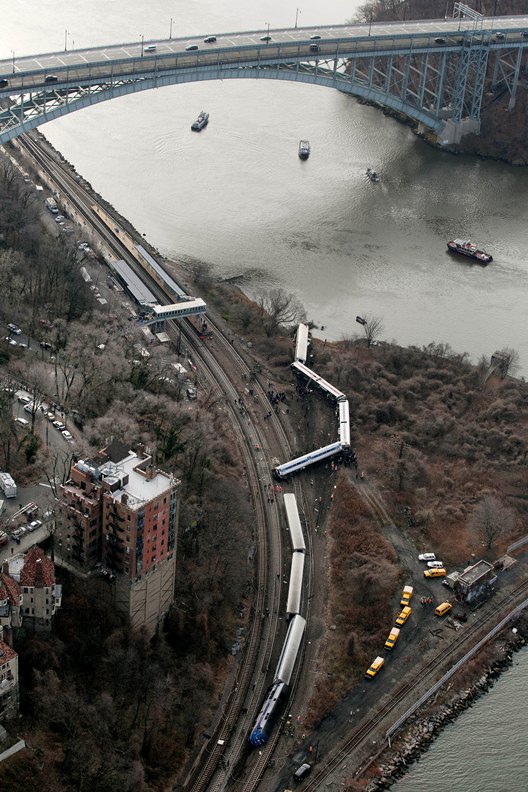 A commuter train operated by Metro-North derailed early on Sunday morning, sending seven passenger cars toppling off tracks and nearly plunging them into the conjunction of the Harlem and Hudson rivers. (See photo on left). Four people were killed and 67 were injured.
A commuter train operated by Metro-North derailed early on Sunday morning, sending seven passenger cars toppling off tracks and nearly plunging them into the conjunction of the Harlem and Hudson rivers. (See photo on left). Four people were killed and 67 were injured.
The train, which was traveling from Poughkeepsie and carrying about 150 customers, jumped the tracks at a curve near the Spuyten Duyvil Station in the Bronx, just a few miles north of its destination at Manhattan's Grand Central Terminal.
“That is a dangerous area on the track just by design,” said New York Governor Andrew Cuomo in a press conference following the 7:20 AM accident. “The trains are going about 70 miles an hour coming down the straight part of the track. They slow to about 30 miles per hour to make that sharp curve.
Recommended For You
Want to continue reading?
Become a Free PropertyCasualty360 Digital Reader
Your access to unlimited PropertyCasualty360 content isn’t changing.
Once you are an ALM digital member, you’ll receive:
- Breaking insurance news and analysis, on-site and via our newsletters and custom alerts
- Weekly Insurance Speak podcast featuring exclusive interviews with industry leaders
- Educational webcasts, white papers, and ebooks from industry thought leaders
- Critical converage of the employee benefits and financial advisory markets on our other ALM sites, BenefitsPRO and ThinkAdvisor
Already have an account? Sign In Now
© 2025 ALM Global, LLC, All Rights Reserved. Request academic re-use from www.copyright.com. All other uses, submit a request to [email protected]. For more information visit Asset & Logo Licensing.








